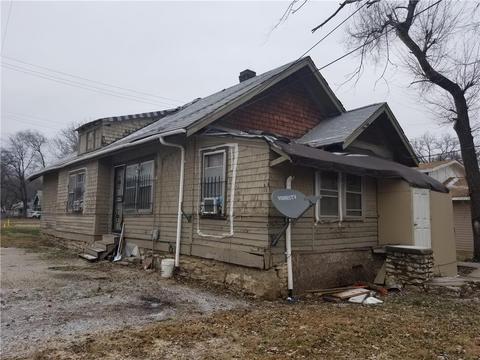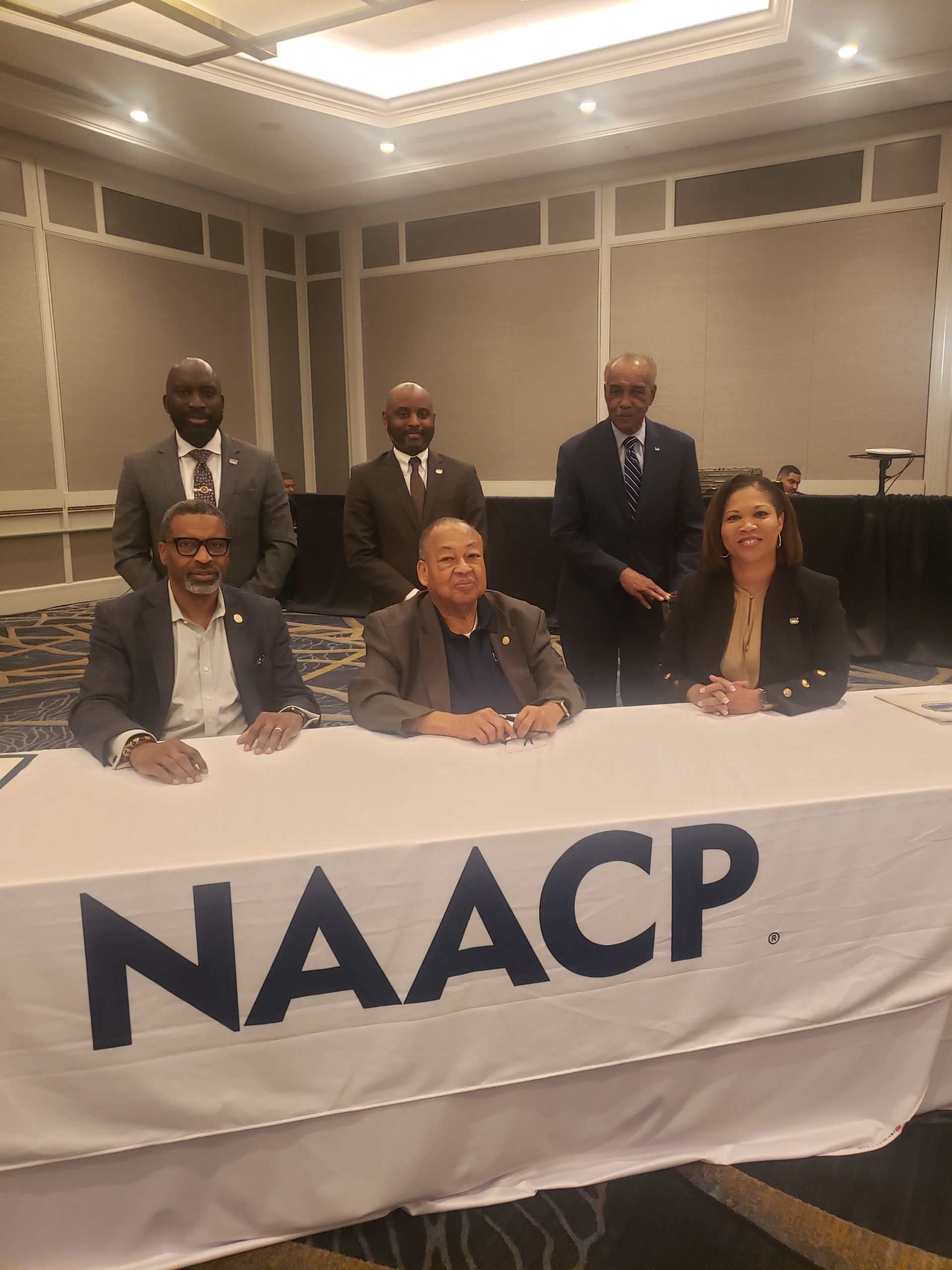Kansas residents are looking back to move community forward
KANSAS CITY, Mo. (AP) — Bernard Crawford grew up on Quindaro during the 1970s. He remembers thriving businesses: bakeries, grocery stores and theaters. He left for school but has come back to be what he calls a “light” on Quindaro, to help it be a safe and welcoming place. A sign on the wall says, “No swearing allowed.”
He’s got fruit snacks and lollipops for the kids, the KCUR reported.
“I want to have a godly atmosphere where families can bring their children,” Crawford says. “I want to see more people coming in and remodeling buildings like I did this one, so resources will come back to the community.”

Mr. B’s Barber Shop at 18th and Quindaro is adjacent to a vacant lot and across from boarded-up buildings. This strip, like other long stretches of Quindaro Boulevard, reflect decades of failed or misguided investment and racist policies that have created pockets of poverty and decay.
Crawford is among an ambitious group of returnees who want to see Quindaro Boulevard become more what it once was. But he and other residents and business owners say they have to battle perceptions of their community in Northeast Kansas City, Kansas, that play out in many news reports.
“A few blocks north of Quindaro Boulevard.”
“Just off Quindaro.”
When headlines link Quindaro Boulevard to every bad thing that happens in the neighborhood, Crawford says, it reinforces a stereotype.
“The stigma from the violence and negativity we have seen portrayed on our news channels (hurts us)” Crawford says as his razor buzzes a customer’s head.
Just a block or so west on Quindaro from Mr. B’s is Wilson’s Pizza. Gary Wilson also grew up on Quindaro. His dad was a firefighter with one of the two segregated black firehouses, and started Wilson’s Pizza in 1989. Gary took it over the next year.
Rolling out his homemade pizza dough and populating the crust with freshly cut vegetables and meats, Wilson says associating Quindaro with every crime in the vicinity drives people away.
“You know when you say something happened on Quindaro Boulevard (when it didn’t), it hurts businesses,” he says.
“If something happened on Metcalf, it happened on Metcalf,” he says, referring to the Johnson County thoroughfare.
As he hands a piping hot pie to a waiting customer, Wilson explains he also sees himself as an anchor in the community.
“Kids come in looking for work, I hand them a broom and give them some work,” he says. “These kids don’t have opportunities so their needs are greater. I’m a counselor, a preacher, I’m more than a business here.”
In her dissertation about the history of the black community in Kansas City, Kansas, anthropologist Susan Greenbaum described a community that was unusually stable and self-sustaining in the latter part of the 19th and early 20th centuries.
She argues this stability was due, in part, to the impact of the Civil War-era Quindaro Township. The river town became a stop on the Underground Railroad for blacks escaping slavery in Missouri as well as a thriving commercial port in territorial Kansas. So-called “free-staters” had come to join the fight in opposing slavery. Quindaro township became a multi-cultural community of white abolitionists and progressives, blacks who had freed themselves from slavery, and Wyandot Indians.
The community survived for less than a decade, but African Americans settled on much of the abandoned farmland.
Later, the Great Migration brought thousands of southern blacks to Kansas, fleeing racial terrorism in the wake of the Civil War. Many settled in the Kansas City area.
By the time Kansas City, Kansas, incorporated in 1886, almost a quarter of the population was black, according to Greenbaum. Black residents were attracted to employment opportunities with expanding railroads and meat-packing houses.
It was a much higher proportion than black populations in other growing urban areas like Chicago or Detroit.
The history and sheer numbers enabled the community to establish a strong infrastructure of social, educational and religious institutions.
“The extent to which the people in the first generation from slavery were able to get the kinds of things done that were done here in that period was just quite impressive,” she says.
While black people benefitted from being on the free side of the state line, communities of Northeast Kansas City, Kansas, including those surrounding Quindaro Boulevard, suffered in the decades to come.
“This remarkable history wasn’t enough to overcome all the institutionally racist forces we would see in the following years,” Greenbaum says.
Robert Hughes, Sr., opened a real estate office in the late 1950s on Quindaro Boulevard. It was a hub for black realtors who’d been excluded from professional associations and from doing business with their white counterparts.
Four years later, Hughes founded the first black mortgage lending company west of the Mississippi River. His son, Robert L. Hughes, Jr., says it was a response to real estate industry and federal housing policies that inhibited access to loans and insurance for black people.
“It was called Mid Central Mortgage Company,” Hughes, Jr. says. “They were able to make Fannie Mae approved loans (to be) sold off into the secondary market and bring funds into the mortgage company so it could make some more loans.”
Hughes says Mid Central spurred growth of single family homes and apartments in the community in the 1960s and ’70s. But it didn’t have the financial capacity of bigger banks and companies. Policies like redlining (refusing loans or insurance to people who live in low-income neighborhoods) deprived black communities of credit and insurance. Blockbusting caused white flight by spreading fear about neighborhood integration. Businesses, black and white, left and drained communities of their tax bases and jobs. Crime increased, exacerbated by the crack cocaine epidemic that afflicted black neighborhoods disproportionately in the 1980s.
Hughes says Quindaro Boulevard entered into a period of decline for decades, putting not only him but other black business owners at a disadvantage.
“I don’t have an asset base. I don’t have the same opportunity from the start and now I’m trying to catch up,” Hughes explains. “I’ll never catch up (because I’m) running a race (in which) you start 100 yards ahead of me. Every time I get to where you were, you’re not there anymore.”
Edith Turnipseed and Veda Monday grew up at 8th Street and Quindaro Boulevard in the 1950s and 1960s. Standing on the grassy lot where their childhood home once was, the sisters, now both in their 70s, remember they weren’t allowed to go farther west along Quindaro than their home.
The black community began at the Missouri River and didn’t extend much farther than 7th or 8th, they recall.
But the sisters remember it as a time of change. Gradual change.
Edith says she was allowed to play in the backyard with the white girl next door.
“Jerry Lou and (I) played all the time,” she says. “I don’t think I ever went in that house and I don’t think Jerry Lou ever went inside our house.”
During this period, black businesses began to open up in the community, like the one that moved into the grocery store when its white owners left.
“It ultimately became the Seafood Grotto, which was owned and operated by an African American man,” Turnipseed says. “That was a big thing, that an African American man got this prime spot, right there on the corner.”
In their memories more than a half century later, it was a happy time.
But Veda says she understands now there was more to the story of their growing up than they knew at the time.
“Our parents did not feel the need to share grown-folk foolishness with children or to visit it upon them,” Veda said. “Much of what we know now we didn’t (learn) until adulthood.”
Some residents believe it was the very process of integration, with the unfair housing and financial practices that accompanied it, which contributed to the loss of a robust black business and cultural community. Some say integration, a measure designed to reverse injustices of the past, had a hand in creating some of the troubles that the neighborhoods surrounding Quindaro Boulevard face today.
More than half a century later, residents and business owners are moving forward by looking back and tapping into the collective energy on which their communities once thrived.
Source: THE HOUR
Information from: KCUR-FM, http://www.kcur.org
An AP Member Exchange by KCUR FM
The post Kansas residents are looking back to move community forward appeared first on National Association of Real Estate Brokers.


